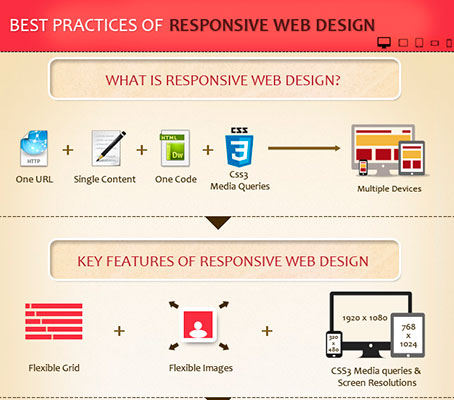Internet Site Style Basics: Tips For Structure A User-Friendly Site
Internet Site Style Basics: Tips For Structure A User-Friendly Site
Blog Article
Short Article By-Abildtrup Devine
When it concerns internet site design, ensuring user-friendliness is crucial. From responsive layout to structured navigation, every aspect plays a vital duty in creating a site that satisfies your target market's needs. Yet what concerning linked web-site that can make or break an individual's searching experience? Remain tuned as we uncover some often-overlooked suggestions that can raise your internet site's functionality to the next degree, making it really stand apart in the electronic landscape.
Significance of Responsive Design
Receptive style is a vital element of contemporary internet site development. Ensuring your web site is receptive means that it can adjust to various screen sizes and devices, giving a smooth experience for customers.
With the boosting use mobile phones and tablets to access the net, having a responsive layout is crucial for reaching a wider audience. best professional services website assists in improving individual experience by making your internet site very easy to browse and continue reading any tool.
Furthermore, receptive design can positively influence your online search engine rankings, as search engines like Google focus on mobile-friendly websites. By having a responsive style, you're additionally future-proofing your website, as brand-new devices with varying screen sizes continue to emerge.
Simplify Navigation Structure
To enhance customer experience and promote simple access to information on your web site, improving the navigation structure is extremely important. When making your site, focus on developing a clear and intuitive navigation food selection that helps site visitors find what they're looking for rapidly.
Restriction the number of food selection items to the essentials, organizing relevant pages together to stay clear of frustrating individuals. Use descriptive labels that clearly show the material of each page, making it much easier for customers to recognize where each web link will certainly take them.
Think about executing dropdown menus for subcategories to stop cluttering the major navigating bar. Additionally, include a search bar prominently on the web page for customers that favor searching for specific details.
Focus on mobile responsiveness in your navigating style to make sure simple access on all gadgets.
Maximize Page Load Rate
Improving page tons rate is critical for preserving visitors on your web site. Slow-loading pages frustrate individuals and can lead to high bounce prices. To maximize web page load rate, start by optimizing photos. Compress photos without compromising top quality to reduce their file dimensions.
Furthermore, make it possible for internet browser caching to keep often accessed sources locally, quickening lots times for returning visitors. website optimization google , JavaScript, and HTML files by getting rid of unnecessary personalities, remarks, and formatting, boosting lots speed.
Think about making use of a material distribution network (CDN) to disperse your site's web content across several servers worldwide, reducing latency for customers accessing your site from different areas. Last but not least, restrict using third-party scripts and plugins, as they can significantly affect tons times.
Conclusion
Finally, by including receptive layout, streamlining navigating, and optimizing page lots rate, you can create an easy to use internet site that attract a bigger target market and boosts user experience. These essential elements make sure that visitors can easily gain access to and browse your website throughout different tools, causing raised engagement and contentment. By concentrating on these key elements, you can build a successful site that keeps users returning for more.
